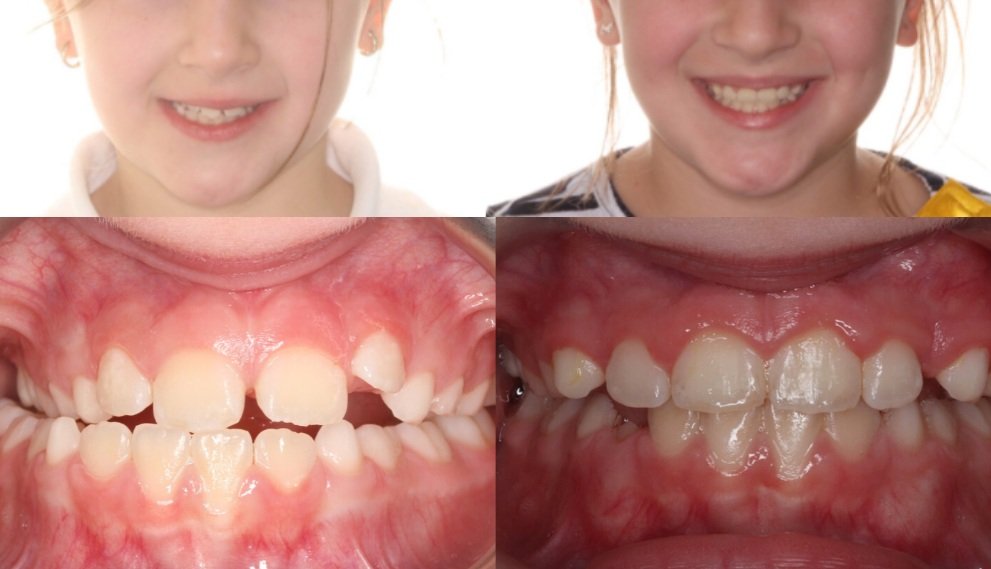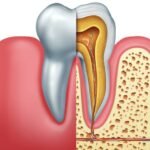Palatal expanders are orthodontic devices that open up a small upper jaw and treat dental issues like crowded teeth or underbites. These tools progressively widen the upper jaw, giving teeth more room to erupt into their ideal placements.
Palatal expansion treatment can have various positive effects, such as improved dental health, oral hygiene, and aesthetic improvements.
In this article, we’ll examine the effects of palate expander before and after therapy.
Palate expander before and after:
A palate expander widens the upper jaw to treat dental problems like crowded teeth and a narrow palate. What to anticipate from a palate expander both before and after the procedure is as follows:
Prior to Therapy;
If a palate expander is necessary, your orthodontist will assess your dental health and make a recommendation.To develop a treatment plan, they will take X-rays, impressions, and pictures of your teeth.The expander, a made-to-order appliance attached to your upper molars, will be fitted for you.
Throughout Treatment:
You will wear the palate expander for several months while adhering to the orthodontist’s adjustments.As you widen your palate, you might feel pressure and discomfort, but these symptoms should pass in a few days.
after therapy:
The orthodontist will take out the expander once the palate has been widened to the appropriate extent.Your orthodontist may advise using a retainer to keep your teeth’s new alignment and stop them from relapsing.Once the expander is removed, you might feel uncomfortable and have trouble speaking or eating for a few days, but these symptoms should pass rapidly.A broader palate has advantages, including better oral health, easier breathing, and a more attractive face.
To get the most outstanding results from your orthodontic treatment, it’s critical to adhere to your orthodontist’s guidelines closely. Based on your particular condition, your orthodontist can provide more detailed information about what to anticipate from your palate expander therapy.
Palate expander before and after gap:
A gap, sometimes called a diastema, is a visible space between two teeth. Although it can happen between two teeth, the front upper teeth are where it most frequently occurs.
Genetics, improper frenum attachment, thumb-sucking, and gum disease are only a few of the causes of gaps.
A dental tool called a palate expander can be used to close gaps between teeth. Here are some what what can palate expander before and after gap do :
It progressively enlarges the upper jaw, giving the teeth more room to align appropriately. The appliance is generally fastened to the upper molars using bands and is created specifically to fit the patient’s mouth.
To create a personalized treatment plan, the orthodontist will inspect the patient’s teeth and take X-rays, pictures, and imprints of their mouth before the start of the procedure.
The palate expander will then be fastened to the patient’s upper teeth, and over many weeks, the device will gently press on the patient’s jawline to progressively enlarge it.
The patient must frequently adjust the expander as instructed by the orthodontist to ensure it is functioning properly during therapy. The space between the teeth will start to narrow as the jawbone enlarges.
The length of the therapy will depend on the severity of the gap and how the patient responds to the palate expander, it is vital to mention.
After the palate expander procedure, the orthodontist could advise using a retainer to stop the gap from reappearing.
Using a palate expander to close gaps between teeth can be a successful procedure. A palate expander may be appropriate for your dental needs, but only after consulting with an orthodontist and receiving a personalized treatment plan.
Palatel expander before and after underbite:
palatal expander is used to enlarge the upper jaw and treat a narrow palate. Here are the description of palatel expander before and after underbite :
Several orthodontic issues, such as underbites, When the lower teeth stick out in front of the upper teeth, might be utilized to fix the problem.
Your orthodontist will conduct a thorough examination before you begin treatment with a palatal expander for an underbite to assess your issue’s severity and evaluate whether a palatal expander is the best course of action for you.
The palatal expander is fitted to the patient’s mouth during therapy and progressively expands over many weeks. This procedure aids in opening up the upper jaw and allows the teeth to erupt into their ideal positions.
You should anticipate noticeable changes in your bite and overall dental alignment following palatal expander therapy for an underbite. Better alignment of your upper and lower teeth can enhance the function of your bite and lessen your risk of dental issues, including tooth wear and jaw pain.
It’s crucial to remember that palatal expansion is only one part of a complete orthodontic treatment plan. Other procedures, such as braces or clear aligners, could be necessary to provide the desired outcomes. You and your orthodontist will create a specialized treatment strategy that addresses your unique requirements and objectives.












